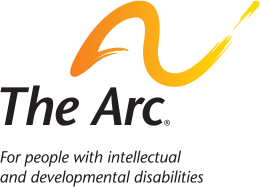Supreme Court Clears Path for Dismantling of Education Department, Putting Students with Disabilities in Harm’s Way
In a fast-moving case with massive consequences for education, the U.S. Supreme Court has allowed the dismantling of the U.S. Department of Education to continue while a legal challenge plays out. The decision came without a full hearing or written explanation, and it greenlights layoffs of federal employees that could devastate services for students with disabilities.
This ruling doesn’t end the case that’s still making its way through the courts, but it means the damage could happen now, before any final decision is made about the legal issues. Here’s what you need to know.
What is the McMahon v. New York Case About?
This case is about President Trump’s firing of the federal employees who staff the U.S. Department of Education (“ED”), and his March 2025 Executive Order announcing plans to fully dismantle it. The order, called “Improving Education Outcomes by Empowering Parents, States, and Communities”, directs the Secretary of Education to take all necessary steps to close ED entirely.
ED plays a critical role in protecting and funding education for students with disabilities, including enforcing federal disability rights laws and providing special education funding to states.
What Happened Before the Supreme Court Got Involved?
- March 2025: More than 1,400 employees (nearly half of ED’s workforce) were fired, that included the removal of essential staff who investigate complaints of discrimination on the basis of disability at the Office of Civil Rights (OCR) and staff who provide expert advice about special education law and services at The Office of Special Education and Rehabilitative Services (OSERS). In addition, the Trump Administration issued the executive order to dismantle the Department of Education this month.
- May 2025: Groups of states, school districts, and teachers’ unions sued the federal government in two separate cases, saying that the administration doesn’t have the authority to eliminate a department created by Congress The case brought by the states (New York v. McMahon) was combined with the case brought by the school districts and teachers’ unions (Somerville Public Schools v. Trump). Now the combined case going forward is using the name New York v. McMahon.
- Lower Courts: Both a district court and court of appeals sided against the Trump Administration, ordering the administration to rehire the affected employees while the case played out in the courts. The judges agreed that the administration could not close ED, as only Congress has the power to create or close federal agencies.
- Appeal to the Supreme Court: The Trump administration asked the U.S. Supreme Court to pause those orders so layoffs could go forward while the case was ongoing.
What Did the Supreme Court Decide?
The Supreme Court allowed the Trump Administration to continue to fire essential federal employees at ED even though the courts have not yet ruled in New York v. McMahon. Because this was an emergency (or “shadow”) docket decision, there was no public hearing and no opinion explaining the reasoning.
Justice Sotomayor, joined by Justices Kagan and Jackson, dissented:
“When the Executive publicly announces its intent to break the law, and then executes on that promise, it is the Judiciary’s duty to check that lawlessness, not expedite it…This decision is indefensible. It hands the Executive the power to repeal statutes by firing all those necessary to carry them out. The majority is either willfully blind to the implications of its ruling or naive, but either way the threat to our Constitution’s separation of powers is grave.
Lifting the District Court’s injunction will unleash untold harm, delaying or denying educational opportunities and leaving students to suffer from discrimination, sexual assault, and other civil rights violations without the federal resources Congress intended.”
The Arc’s Position
The Arc believes every student with a disability has the right to a free, appropriate public education in an inclusive setting. The dismantling of the Department of Education undermines this right. Read more in our position statement on education.
Our CEO, Katy Neas (who served in senior leadership at ED), filed a declaration in this case, explaining that without meaningful staffing in ED’s Office of Civil Rights (OCR) and Office of Special Education and Rehabilitative Services (OSERS), the federal government cannot effectively monitor or enforce disability rights in schools.
As she stated in the declaration:
“The dismantling of the U.S. Department of Education will have a devastating impact on The Arc’s members, people with IDD and their families. The weakening of federal oversight over special education and civil rights monitoring in schools threatens to take us back to a dark time in our nation’s history when students with disabilities were largely excluded from school, without rights or recourse.”
What Does This Mean for People with Disabilities?
This decision allows the dismantling of ED to move forward now, even though the underlying case hasn’t been decided. The firings included critical staff at OCR and OSERS. Without these staff, it will be harder to investigate discrimination in schools and help schools give students the supports they need.
Once the staff and infrastructure are gone, building them (if the plaintiffs ultimately win) will be slow and difficult. The case is still ongoing, but the Supreme Court’s temporary decision is a major blow to the stability and enforcement of education rights for children with disabilities nationwide.
Where Can I Learn More?
- Katy Neas Op-Ed on Department of Education
- Somerville Public Schools v. Trump Case Page








